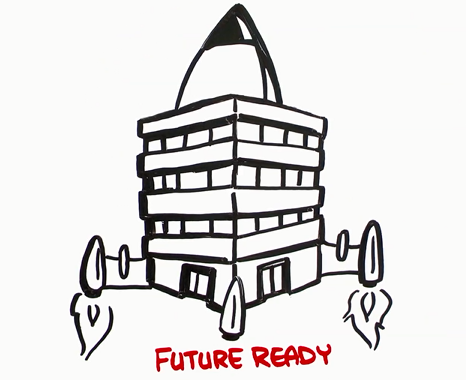
The concept of peak oil has been widely discussed, but have you considered peak labour? The fact that Australia’s workforce is aging comes as no surprise, but what does this actually mean in real terms?

From 2013, onwards, we will see more people leaving the workforce than entering it. This simply means that we cannot replace the talent that is walking out the door towards retirement. Our ability to choose from a continuously growing, strong pool of young talent is set to dramatically decrease – it is predicated that by 2030, there will be a global shortage of 30 to 40 million (or 13% of the demand) for highly skilled workers, with 38 million tertiary educated employees transitioning to retirement[1].
Not only are we seeing an ever diminishing pool of young talent coming through, we are approaching a time where our largest cohort of the population will be aged over 65. In 2013, 14% of the Australian population was aged over 65; by 2050 this will be 21%[2]. Right now, Australian workers aged over 65 constitute 3.4% of the workforce and are most likely in professional roles[3].
According to the Grey army advances report, prepared by Deloitte Access Economics[4], a 3% additional increase in mature age workforce participation would mean the national economy would be a further $33 billion larger. If we could achieve a lift of 5%, we would add $47.9 billion per annum. (This is measured relative to unchanged workforce participation among Australians aged 55 and over.)
Australian organisations, which are at the cutting edge of strategic workforce planning, are looking at these trends and seeking ways to manage this shift. The challenge is to create workplaces where mature age workers remain engaged in a meaningful way and are valued for their skills and experiences.
To meet this challenge requires building on inclusive leadership practices for diversity to be fully leveraged and stereotypes associated with older employees to be addressed and having a flexible work culture is considered to be key to underpinning the engagement of mature employees[5].
In the 2013 Michael Page ‘Employee Intentions Report’[6], flexibility was reported as the third most important workplace feature for attracting new talent, after salary increase and career progress. The demand for flexibility is no longer just about mums with young children, as the demand for flexibility increases with age. This demand comes from today’s Baby Boomers who are redefining this life stage, staying in the workforce for longer and reinventing the approach to retirement.
So in addition to the expectations of a new generation of young employees and women who expect flexibility to be a feature of the modern workforce, older employees are driving the demand for flexible work practices. To manage this well, we need to find new ways of engaging a progressively ageing workforce, by recognising their needs for gradual transition to retirement, whilst they care for elderly parents/partners and grandchildren and while they satisfy their need and desire to continue active engagement in the workforce.
In fact, a flexible work environment will not only allow for older people to gradually transition to retirement, but will also open up opportunities for their knowledge and experienced to be passed onto the younger generation. The potential ‘log jam’ of senior employees holding onto their posts for longer and blocking the career progression of new talent can be overcome by approaching flexibility in a strategic, smart way.
While most senior roles are typically inflexible and rarely part time, challenging this status quo can open up new opportunities[7]. Redesigning senior roles for flexibility by distributing aspects of the role and responsibilities will allow for a host of succession or mentoring opportunities to open up and, in the same way, identifying that people will be in the workforce for longer means that we can no longer assume a ‘churn and burn’ situation with people working at maximum speed, until an abrupt switch to retirement. Establishing a realistic work/life balance, continuing career development well into mature years and a gradual transition out of the workplace is positioned to become a new focus of the workforce of the future.
Fostering a flexible work culture means that all employees at various life and career stages can remain engaged and productive; supporting organisations to remain agile and competitive into the future. Recognising that the demand for flexibility increases with age and that work can be customised to fit each individual is the next step for many organisations. Embedding this understanding into strategic business planning is something that will distinguish those who are prepared for change and those who are not.
For more information on Symmetra’s Flexbile work solutions solutions, visit our FlexAgility page, call us on +61 (0) 2 8570 9400 or email flex@symmetra.com.au
[2] ABS (3222.0)Population Projections, Australia, 2012 (base) to 2101
[4] Australian Human Rights Commission (2012): Increasing participation among older workers: The grey army advances (can be downloaded here)
